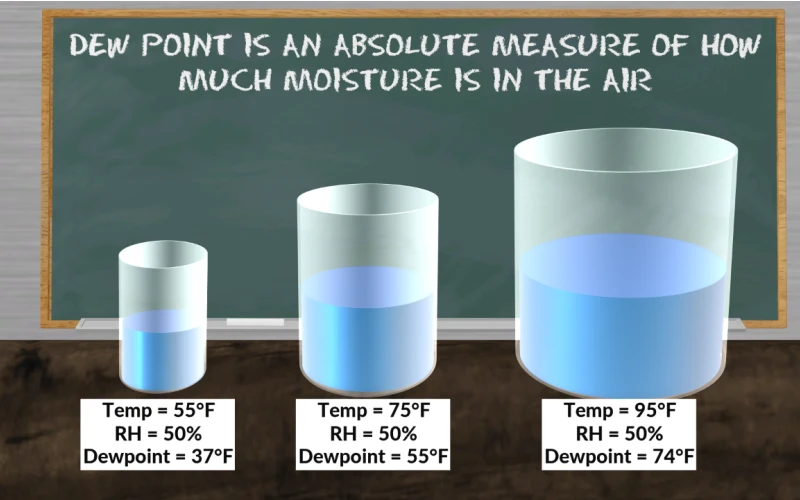
# High Dew Point Conditions and Their Impact on Weather Patterns
## Understanding High Dew Point
High dew point conditions occur when the air contains a significant amount of moisture, making it feel more humid and uncomfortable. The dew point is the temperature at which air becomes saturated with water vapor, leading to condensation. When the dew point is high, it indicates that the air is holding a large amount of moisture, which can have various effects on weather patterns and human comfort.
## How High Dew Point Affects Weather
High dew point conditions often lead to increased humidity levels, which can influence weather in several ways:
– Increased likelihood of precipitation
– Formation of dense fog
– More intense thunderstorms
– Reduced visibility
– Higher heat index values
These conditions can make summer days feel much hotter than the actual temperature suggests, as the body’s ability to cool itself through sweat evaporation is reduced.
## Regional Variations in High Dew Point Conditions
Different regions experience high dew point conditions with varying frequency:
Region | Typical Dew Point Range | Common Season
Tropical areas | 75°F+ (24°C+) | Year-round
Subtropical areas | 65-75°F (18-24°C) | Summer
Temperate areas | 55-65°F (13-18°C) | Summer
## Health and Comfort Considerations
High dew point conditions can significantly impact human health and comfort:
– Increased risk of heat-related illnesses
– Difficulty sleeping due to warm, sticky conditions
– Aggravation of respiratory conditions
– Higher energy demands for air conditioning
– Potential for mold growth in buildings
## Forecasting High Dew Point Conditions
Meteorologists use various tools to predict high dew point conditions:
– Weather balloons to measure atmospheric moisture
– Satellite imagery to track moisture patterns
– Computer models that simulate atmospheric conditions
– Surface observations from weather stations
Understanding these forecasts helps communities prepare for potential heat waves and severe weather events associated with high humidity.
## Climate Change and Dew Point Trends
Recent studies suggest that climate change may be leading to more frequent high dew point conditions in many regions. Warmer air can hold more moisture, potentially leading to:
– More intense rainfall events
– Longer periods of uncomfortable humidity
– Changes in local ecosystems
– Shifts in agricultural growing seasons
These changes highlight the importance of monitoring dew point trends as part of broader climate studies.
Keyword: high dew point